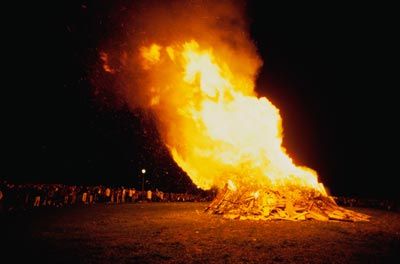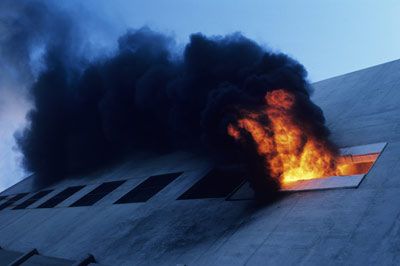Candles really are an amazing lighting system -- the fuel itself is the package. There are two parts that work together in a candle:
- The fuel, made of some sort of wax
- The wick, made of some sort of absorbent twine
The wick needs to be naturally absorbent, like a towel, or it needs to have a strong capillary action (as in glass fiber wicks used in oil lamps). If you buy a length of un-waxed wick at a craft store and play with it, you will find that it feels like soft string and absorbs water very well. This absorbency is important in a candle because the wick needs to absorb liquid wax and move it upward while the candle is burning.
Advertisement
Paraffin wax is a heavy hydrocarbon that comes from crude oil (see What is the difference between gasoline, kerosene, diesel fuel, etc.? for details on how things like gasoline and paraffin wax are made from crude oil). When you light a candle, you melt the wax in and near the wick. The wick absorbs the liquid wax and pulls it upward. The heat of the flame vaporizes the wax, and it is the wax vapor that burns. You can prove that it is wax vapor, rather than liquid wax, that is burning with two experiments:
- If you place one end of a metal or glass tube (shaped like a thin straw, 4 to 6 inches / 10 to 15 cm long) into a candle's flame at a 45-degree angle, you can then light the upper end of the tube. The paraffin vapor flows up the tube and is the fuel for this second flame.
- When you blow out a candle, you notice a stream of white smoke leaving the wick. This stream is paraffin vapor that has condensed into a visible form. It continues to form as long as the wick is hot enough to vaporize paraffin. If you touch a lit match to the stream, a flame will run down it and re-light the wick.
The reason the wick does not burn is because the vaporizing wax cools the exposed wick and protects it. You may have seen the camping trick of boiling water in a paper cup. The cup does not burn because the water inside cools it. The liquid wax does the same thing for the wick.
Paraffin wax will burn on its own, but it is like cooking oil, motor oil and coal in that you have to get it very hot for combustion to begin. An oil fire is intense and very hard to put out. Paraffin is the same way. In a candle, this works great -- only the tiny amount of wax on the wick is hot enough to vaporize and burn.
Advertisement


